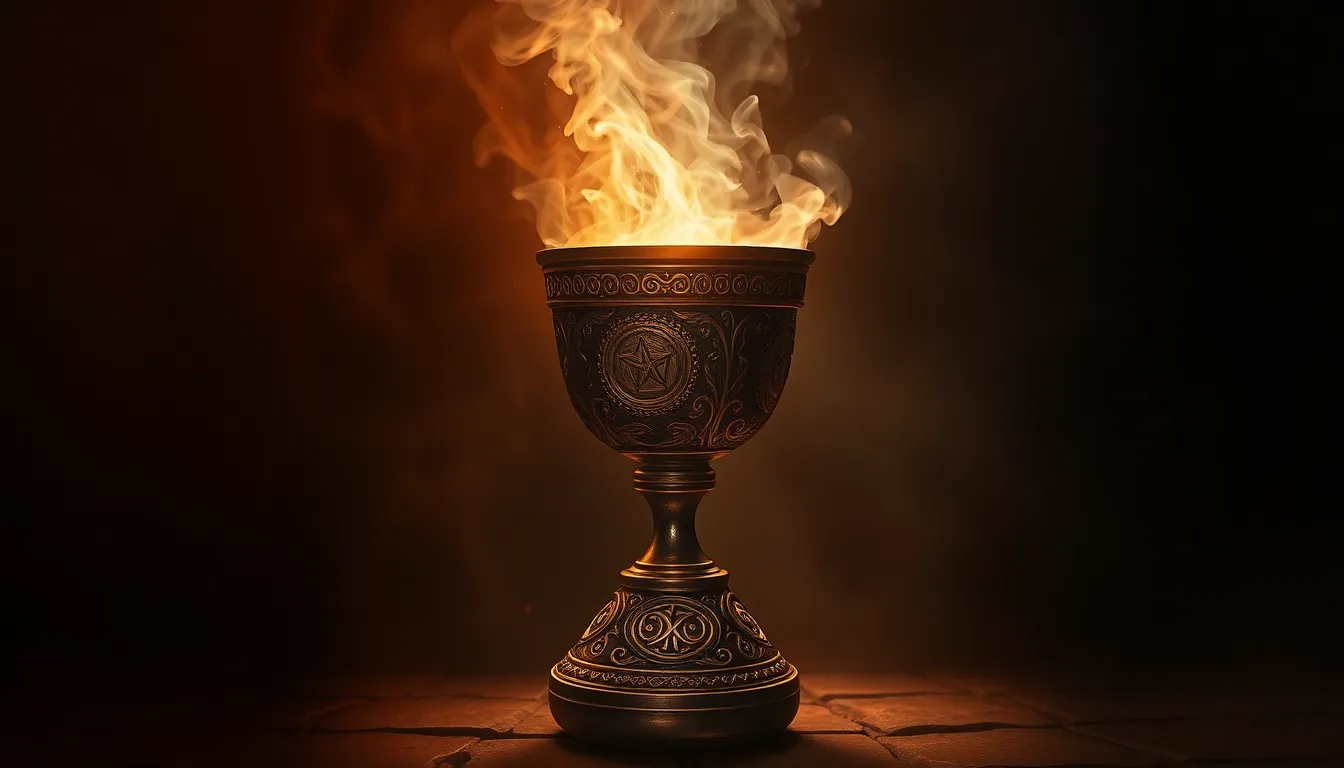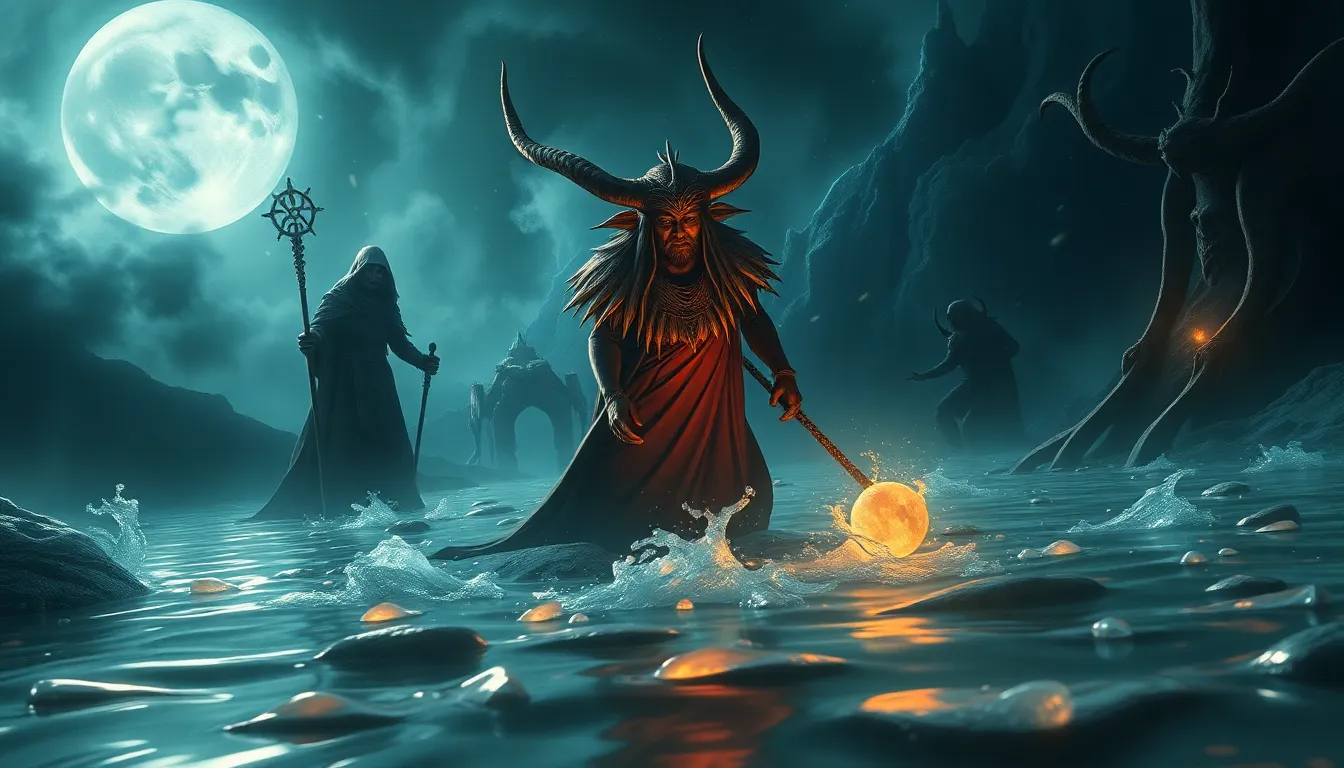Baltic Mythology: A Tapestry of Mythical Creatures
The Baltic region, encompassing countries like Lithuania, Latvia, and Estonia, is rich in ancient mythology, a vibrant tapestry woven with stories of gods, goddesses, and a colorful cast of mythical creatures. These creatures, far from being mere figments of imagination, hold deep cultural significance, embodying fundamental beliefs about nature, life, and the human condition. Their tales offer a window into the worldview of the Baltic people, revealing their interconnectedness with the natural world and their understanding of the forces that shape their destinies.
The Importance of Mythical Creatures in Baltic Culture
Mythical creatures played a pivotal role in Baltic culture, serving as more than just entertaining stories. They were integral to the understanding and interpretation of the world around them. They embodied natural phenomena, personified abstract concepts, and provided frameworks for navigating the complexities of life and death.
These creatures served as cautionary tales, highlighting the dangers of hubris and the consequences of disrespecting the natural world. They also offered hope and guidance, providing reassurance in times of uncertainty and advocating for righteous behavior. Their stories served as a moral compass, shaping ethical values and social norms within Baltic communities.
The Jūratė and Kastytis Myth: Symbolism of Water and Land
One of the most enduring myths in Baltic folklore is the story of Jūratė, the goddess of the sea, and Kastytis, a mortal fisherman. This tale embodies the age-old tension between the forces of nature and human ambition. Jūratė, ruler of the underwater kingdom, falls in love with Kastytis, a violation of the natural order. As a consequence, their love is forbidden, and their union faces formidable obstacles.
The myth symbolizes the ancient Baltic reverence for the power of the sea, personified by Jūratė, and the allure of the earthly realm, represented by Kastytis. Their tragic love story underscores the potential for both beauty and destruction when the balance between the natural and the human is disrupted.
Through this myth, the Baltic people expressed their deep respect for the forces of nature, acknowledging their power and the consequences of seeking dominion over them.
The Laima: The Goddess of Fate and Destiny
In Baltic mythology, Laima, the goddess of fate, played a crucial role in shaping the lives of individuals. Laima’s influence extended from the moment of birth, where she determined the lifespan and destiny of each person, to the moment of death. She was seen as a weaver, spinning the threads of life, and her decisions were considered unchangeable.
Laima’s presence permeated Baltic life. She was invoked during births, weddings, and funerals, and her symbol, a spinning wheel, was a common motif in Baltic art and folklore. Laima's power and influence reflected the Baltic belief in the interconnectedness of life and the delicate balance of fate. Her presence served as a reminder of the importance of accepting the course of life, embracing both joy and sorrow, and living with purpose and intention.
The Velnias: The Personification of Chaos and Darkness
The Velnias, the Baltic version of the Devil, embodies the forces of chaos and darkness. He is a trickster figure, often associated with evil, temptation, and destruction. He is a powerful being who can manipulate and deceive, tempting people with promises of wealth and power in exchange for their souls.
The Velnias is a constant presence in Baltic folklore, serving as a reminder of the dangers of succumbing to greed and temptation. He represents the potential for darkness that exists within all humans and the importance of resisting evil. Through the stories of the Velnias, the Baltic people conveyed their understanding of the constant struggle between good and evil, the consequences of succumbing to darkness, and the importance of maintaining moral integrity.
The Ragana: The Witch and Her Ambiguous Role in Baltic Folklore
The Ragana, the Baltic witch, is a complex figure whose role in folklore is both fascinating and ambiguous. She is often depicted as a powerful woman with magical abilities, capable of both good and evil. The Ragana's powers are deeply rooted in nature, drawing on herbs, plants, and the elements to perform spells and potions. Some Raganas are benevolent figures who use their powers to help others, offering healing and protection. They are seen as healers, wise women, and guardians of ancient traditions.
However, the Ragana is also commonly associated with darker forces. She can be a dangerous figure, wielding her magic for selfish purposes, causing harm, or even manipulating others for her own gain. Her powers are often attributed to a pact with the Velnias, the Devil, further solidifying her association with evil.
The Ragana’s ambiguous nature reflects the complexities of female power in Baltic society. She represents the potential for both good and evil, highlighting the power and danger inherent in the feminine archetype. The Ragana's ability to wield magic, often attributed to her connection with nature, underscores the importance of understanding and respecting the natural world, as it holds both immense power and potential for both healing and harm.
The Perkūnas: The Thunder God and Protector of the People
Perkūnas, the Thunder God, is a central figure in Baltic mythology, representing the power and authority of the heavens. He is associated with thunder, lightning, and storms, and is seen as a powerful force that protects the people from evil and chaos. Perkūnas is often depicted as a warrior, wielding a hammer or axe, symbols of his strength and dominance. He is a righteous god, upholding justice and punishing those who break the laws of the land. His thunderous roars and flashes of lightning are signs of his power and his presence.
Perkūnas plays a crucial role in Baltic folklore, embodying the natural forces that shape the world. He is both feared and respected, representing the awe-inspiring power of nature and the importance of aligning oneself with righteousness and justice. His presence in stories and rituals reflects the Baltic people's belief in the importance of maintaining balance in the natural world and aligning oneself with those forces that protect them from harm.
The Laumė: The House Spirit and Guardian of the Home
In Baltic folklore, the Laumė is a benevolent house spirit who protects the home and its inhabitants. She is often depicted as a small, beautiful woman dressed in white, with long flowing hair and a gentle smile. The Laumė is associated with the well-being and prosperity of the household, bringing good fortune, luck, and happiness to those who treat her with respect. She is believed to watch over children, offering them guidance and protection.
Laumė's presence is often felt in the home, through the rustle of leaves, the gentle sound of footsteps, or the scent of fresh flowers. She is known to leave gifts, such as small tokens of luck or flowers, as a sign of her favor. The Laumė's presence underscores the importance of maintaining a clean and welcoming home, treating all living things with respect, and fostering kindness and love within the family.
Interpreting the Symbolism: Theories and Perspectives
The symbolism of Baltic mythical creatures has been interpreted in various ways throughout history, with scholars offering diverse theories and perspectives. Some scholars focus on the creatures' connection to the natural world, suggesting that they represent the forces of nature that shape the lives of humans. Others emphasize the creatures' symbolic representation of abstract concepts, such as fate, destiny, good and evil, and the human condition.
It’s important to remember that Baltic mythology is a complex and multifaceted tapestry, reflecting the beliefs, values, and worldview of a rich and diverse culture. Understanding these creatures and their roles in folklore provides valuable insight into the hearts and minds of the Baltic people.
Exploring the Continuity of Baltic Mythology in Modern Culture
Baltic mythology, though rooted in the ancient past, continues to resonate in modern culture. The stories of these mythical creatures have been passed down through generations, influencing art, literature, and even music. Many of the symbols and motifs found in Baltic folklore, such as the spinning wheel, the oak tree, the thunder god, and the house spirit, remain relevant to contemporary life, reflecting the enduring power of these ancient stories.
The continued relevance of Baltic mythology is a testament to its enduring power and its ability to speak to the human experience across generations. The creatures of this rich and vibrant tradition continue to offer insight into the nature of life, death, and the forces that shape our destinies.
FAQ
What is Baltic Mythology?
Baltic mythology is the body of myths and legends associated with the Baltic people, encompassing countries like Lithuania, Latvia, and Estonia.
Are Baltic Mythological Creatures Real?
Baltic mythical creatures are not real in the literal sense. They are products of imagination and storytelling, reflecting the beliefs and values of the Baltic people.
What is the Significance of Baltic Mythological Creatures?
Baltic mythical creatures hold deep cultural significance, embodying fundamental beliefs about nature, life, and the human condition. They offer a window into the worldview of the Baltic people, revealing their interconnectedness with the natural world and their understanding of the forces that shape their destinies.
How are Baltics Mythological Creatures Depicted in Art?
Baltic mythical creatures are often depicted in art, with symbols and motifs reflecting their roles in folklore. These depictions provide insight into the visual culture of the Baltic people and their understanding of these creatures.



